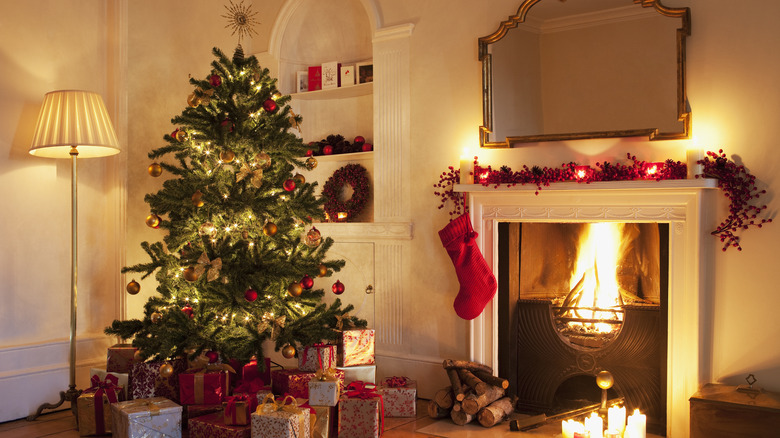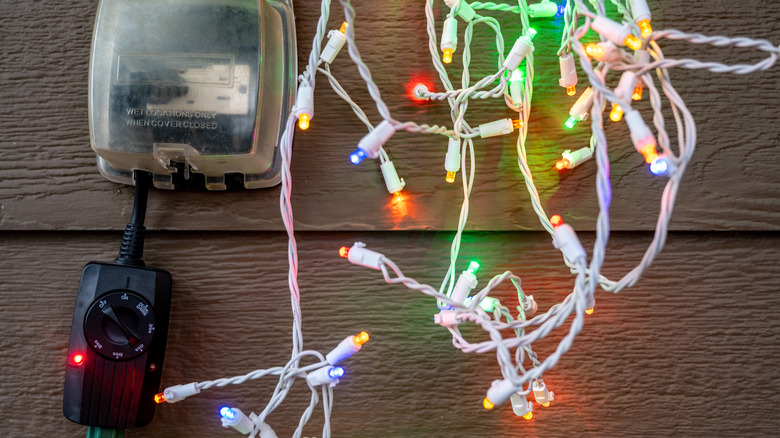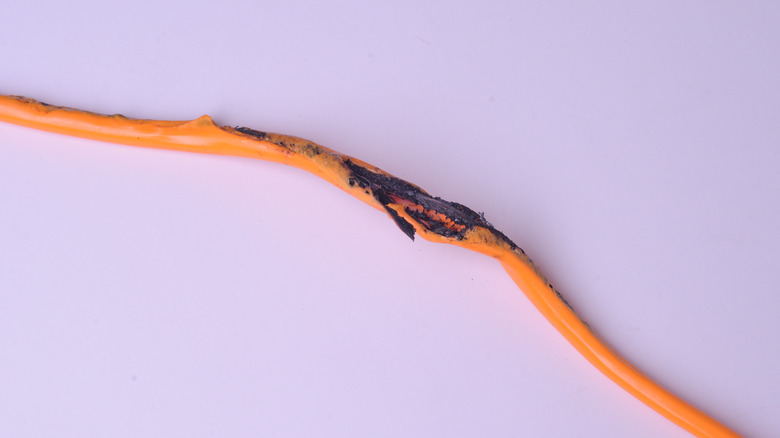3 Common Reasons Why Your Christmas Lights Aren't Looking Their Best
Everyone has their own unique way of decorating a Christmas tree. White lights, colored lights, icicles, frosted lights, and any combination can create a magical Christmas feeling when decorating your tree. To get that bright look and completely cover your tree, Christmas Lights Etc. suggests using a minimum of 100 lights per vertical foot. That means a seven-foot tree should have at least 700 lights on it for full coverage. This ensures an even distribution of lights and few to no gaps around the tree.
But it's normal to pull out the lights from last year and find that they don't look quite right on this year's tree. There might be more gaps between the lights, or the bulbs may not be shining as brightly. It's frustrating for lights to stop working after being in storage, but not uncommon. Luckily, there is usually a simple explanation that leads to a quick solution to get your tree back to shining through the night.
Problems with the bulb
One of the most common issues is also fixed fairly easily. A missing or burnt-out bulb can be the reason for Christmas light outages. This can cause single light to go out or multiple, including a small section or the entire string of lights. But don't throw away the string just yet. First, check to make sure the bulb isn't just loose. In the easiest cases, tightening the bulb can restore the lights, says Yard Outlet. If it isn't loose and the light is still out, you may be able to replace the bulb with a spare.
To avoid having to change bulbs each year, may want to consider the type of Christmas lights you buy. Incandescent Christmas lights burn for about 3,000 hours, according to Christmas Light Source, or a little bit over four months. Depending on how long you keep your decorations up, these types of lights can last about four seasons before needing to be replaced. However, LED light can last six or seven seasons, depending on how long you leave your decorations up, says Christmas Designers. Your home's electricity can also determine how long lights last. If you experience a lot of power surges, that can affect the lifespan of your Christmas lights.
Issues with the fuse
If the issue isn't a bulb, there's a good chance it might be the fuse. String lights usually have one or two fuses inside the plug and often have a replacement in case a fuse gets blown. Fuses blow if electrical currents surpass a safe level, says Mr. Electric. Without this safety mechanism, they can melt or catch fire, sending a Christmas tree up in flames. A blown fuse may seem like a fault that prompts throwing the string of lights away, but this is actually an easy repair homeowners can do themselves.
To replace a blown fuse, start by unplugging the lights and then opening the cartridge on the plug. Using a screwdriver, remove the fuse bulbs before inserting the replacements that come with the lights. If there aren't replacements or you can't find them, electronic stores usually sell spares. With the new fuse bulbs in place, you can close the socket and test out the lights by plugging them in again. If they don't light up, there may be another issue that prevents them from working. You can prevent blown fuses by limiting your extension cords and not connecting too many lights together.
The wire is frayed or broken
If you've tried everything else and your lights still aren't lighting up, there's a good chance the wire is frayed or broken. Broken wires are pretty easy to spot, as there's often a split in the plastic coating that reveals the cables inside. Broken or frayed wire can cause your lights to flicker or dim because the electrical current is broken. Unfortunately, this issue doesn't have a fix as the other two do. If a wire is broken or frayed, it can be a fire hazard because the lights can short, creating sparks.
For this reason, experts suggest examining Christmas lights before hanging them to spot any potential damage, according to Apollo Home. They also advise against using staples, tacks, or nails to hang wired Christmas lights indoors. Since metal is conductive, it can generate heat and potentially cause a fire. While there are tutorials for how to rewire or fix frayed or broken Christmas lights, the safest thing to do is throw them away and replace them with new ones.



